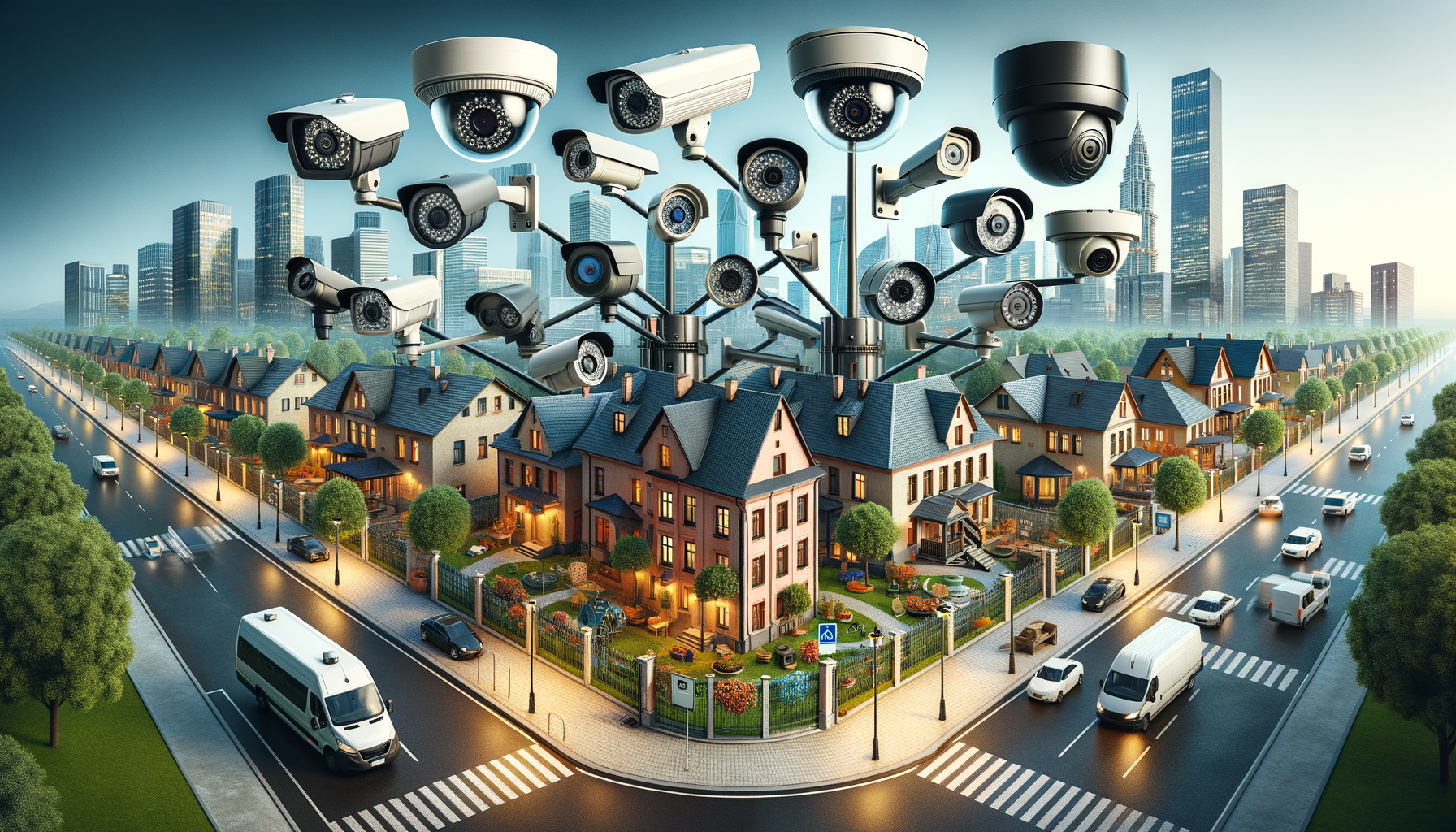
Exploring the World of Security & Surveillance Cameras
The Evolution of Surveillance Cameras
Surveillance cameras have come a long way since their inception. Initially used primarily for security in large establishments, their usage has expanded dramatically over the years. Today, they are an integral part of security systems in homes, businesses, and public spaces worldwide. This evolution has been driven by technological advancements that have made cameras more accessible, affordable, and effective.
Early surveillance systems were limited by their analog nature, requiring physical tapes for recording and offering low resolution. However, the digital revolution transformed these systems, enabling high-definition video capture, remote access, and seamless integration with other security devices. Modern cameras now offer features such as night vision, motion detection, and even facial recognition. These enhancements not only improve security but also provide valuable data for various applications beyond traditional security measures.
As technology continues to advance, the future of surveillance cameras looks promising. Innovations like artificial intelligence and machine learning are being integrated into camera systems, allowing for smarter and more responsive security solutions. These advancements promise to enhance the ability of cameras to analyze footage in real-time, detect unusual activities, and even predict potential security threats.
Key Features of Modern Surveillance Cameras
Modern surveillance cameras are equipped with a plethora of features that enhance their functionality and effectiveness. Understanding these features can help users select the right system for their needs. Here are some key features to consider:
- High-Resolution Imaging: Most contemporary cameras offer high-definition video quality, providing clear and detailed footage that is essential for identifying individuals and incidents.
- Night Vision: Infrared technology allows cameras to capture clear images in low-light or no-light conditions, ensuring round-the-clock surveillance.
- Motion Detection: This feature enables cameras to start recording only when motion is detected, saving storage space and making it easier to review footage.
- Remote Access: With internet connectivity, users can access live feeds and recorded footage from anywhere in the world using a smartphone or computer.
- Weatherproofing: Outdoor cameras are designed to withstand various weather conditions, ensuring durability and reliability.
These features make modern surveillance cameras versatile tools for enhancing security and monitoring environments effectively. As technology evolves, we can expect even more sophisticated features to become standard in surveillance systems.
Applications of Surveillance Cameras
Surveillance cameras are used in a wide range of applications, each requiring specific features and configurations. Here are some common uses:
- Home Security: Homeowners use surveillance cameras to monitor their property, deter burglars, and keep an eye on family members or pets.
- Business Security: Businesses utilize cameras to prevent theft, monitor employee productivity, and ensure customer safety.
- Public Safety: Cities and municipalities deploy cameras in public areas to enhance safety, monitor traffic, and assist in law enforcement.
- Industrial Surveillance: In industries, cameras help monitor operations, ensure safety compliance, and prevent unauthorized access.
Each of these applications may require different types of cameras, from discreet indoor models to robust outdoor systems. Understanding the specific needs of each application is crucial in selecting the right surveillance solution.
Challenges and Considerations in Surveillance
While surveillance cameras offer numerous benefits, they also pose certain challenges and considerations. One of the primary concerns is privacy. The presence of cameras in public and private spaces raises questions about the balance between security and individual privacy rights. It is essential for users to adhere to legal guidelines and respect privacy while deploying surveillance systems.
Another challenge is data management. With high-definition footage being recorded continuously, managing and storing this data can be daunting. Users need to consider storage solutions that offer sufficient capacity and security to protect sensitive information.
Finally, the cost of installation and maintenance can be significant. While prices have decreased over the years, high-quality systems can still be a considerable investment. It is important to weigh the costs against the benefits and choose a system that offers the best value for the intended application.
By addressing these challenges and considerations, users can optimize their surveillance systems to provide effective security and peace of mind.
The Future of Surveillance Technology
The future of surveillance technology is bright, with ongoing advancements promising to further enhance security capabilities. Artificial intelligence (AI) and machine learning are at the forefront of this evolution, offering the potential for cameras to analyze footage intelligently and autonomously.
AI-powered cameras can identify unusual patterns, recognize faces, and even predict potential threats. This level of intelligence enables proactive security measures, allowing for faster response times and improved safety outcomes.
Additionally, the integration of the Internet of Things (IoT) is set to revolutionize surveillance systems. IoT-enabled cameras can communicate with other smart devices, creating interconnected security networks that offer comprehensive coverage and control.
As these technologies continue to develop, the possibilities for surveillance cameras are virtually limitless. From enhancing public safety to providing personalized home security solutions, the future holds exciting opportunities for those looking to invest in cutting-edge surveillance technology.
